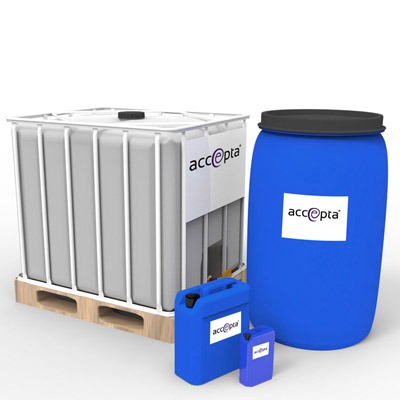Discovering Cutting-Edge Foam Control Technologies for Lasting Practices
Discovering Cutting-Edge Foam Control Technologies for Lasting Practices
Blog Article
A Comprehensive Overview to Applying Foam Control Solutions in Your Procedures
Reliable foam control is an essential element of functional efficiency that usually goes neglected. Recognizing the complexities of foam generation can significantly impact both productivity and item quality. By analyzing crucial elements such as application compatibility and personnel training, organizations can optimize their foam administration initiatives.
Comprehending Foam Obstacles
Foam challenges are a significant worry throughout different markets, influencing operational efficiency and item quality. The development of excessive foam can impede processes such as blending, transportation, and storage, leading to increased downtime and waste. In markets like food and beverage, drugs, and petrochemicals, foam can hinder assembly line, triggering item incongruities and contamination threats.
Moreover, foam can block tools functionality, bring about expensive repairs and maintenance. For example, in wastewater treatment, foam can interrupt clarifier operations, causing reduced treatment efficiency and governing conformity problems.
Comprehending the underlying reasons for foam generation is crucial for reliable management. Aspects such as surfactants, temperature variations, and frustration levels can all add to foam manufacturing. Determining these components allows markets to execute targeted methods that decrease foam development while keeping product stability.
Kinds of Foam Control Solutions

Mechanical remedies include the usage of gadgets such as foam skimmers or defoamers. Chemical solutions, on the various other hand, include the application of defoaming agents-- substances that interfere with the foam framework, leading to its collapse. Foam Control.
Finally, operational techniques focus on procedure adjustments. This may involve changing devices criteria, such as temperature and pressure, or transforming the flow prices of liquids to minimize foam generation. Applying good housekeeping techniques can additionally reduce foam development by reducing pollutants that contribute to foam security.
Choosing the ideal foam control solution involves examining the particular demands of the operation, consisting of the kind of procedure, the attributes of the products involved, and safety considerations.
Choosing the Right Products
Selecting the appropriate foam control products requires a comprehensive understanding of the details application and its unique obstacles. Variables such as the sort of foam, the environment in which it happens, and the preferred outcome all play pivotal functions in product option. Foam Control. For instance, in sectors like food processing, it is critical to select food-grade defoamers that abide by safety policies while successfully managing foam.
Additionally, take into consideration the viscosity of the liquid where the foam problem exists. Some products are developed for low-viscosity applications, while others are customized for thicker liquids. Compatibility with existing processes is another critical aspect; the picked foam control agents must integrate flawlessly without interfering with overall procedures.
Another crucial element is the approach of application. Some products may call for dilution, while others can be used straight. Examining the simplicity of use and the needed dosage can provide understandings into the item's effectiveness and cost-effectiveness.
Application Approaches
Successful execution strategies for foam control services need a methodical technique that straightens product option with operational needs. The very first step involves a detailed analysis of the procedures where foam happens, recognizing particular locations that demand treatment. By engaging cross-functional teams, including engineering, production, and quality guarantee, organizations can gather understandings that educate the option of one of the most reliable foam control products.
Next, it is critical to develop clear purposes for foam decrease, ensuring that these goals are attainable and measurable. This may involve defining acceptable foam levels and the timelines for application. Educating workers on the properties and application approaches of picked foam control representatives is equally important, as appropriate usage is important for optimum outcomes.
Furthermore, integrating foam control services right into existing process calls for mindful planning. Ultimately, a well-structured technique will certainly improve functional efficiency while properly managing foam-related obstacles.
Surveillance and Evaluating Effectiveness
Surveillance and assessing the performance of foam control options is important for ensuring that executed strategies generate the wanted results. This procedure involves methodical data collection and evaluation to examine the performance of foam control agents and techniques. Trick performance indicators (KPIs) must be developed prior to application, enabling for a clear baseline versus which to measure progression.

Examining performance also calls for routine reviews of foam control treatments and agent efficiency. This can be completed with sampling and testing, permitting drivers to establish if present services are fulfilling operational requirements. In addition, it is important to get responses from employee who engage with these systems daily, as their understandings can disclose functional subtleties that measurable information may forget.

Inevitably, an organized surveillance and analysis structure aids recognize needed modifications, making certain that foam control remedies stay efficient, cost-effective, and lined up with business goals.
Final Thought
In conclusion, reliable foam control remedies are important for optimizing operational effectiveness and maintaining product top quality. A thorough understanding of foam obstacles, incorporated with the option of suitable products and application methods, facilitates the successful management of foam generation. Spending and establishing quantifiable kpis in workers training better improve the efficiency of foam control measures. Normal surveillance and assessment ensure constant renovation, eventually causing a much more productive and structured functional atmosphere.
Applying good housekeeping methods can likewise mitigate foam development by decreasing impurities that contribute to foam stability.
Selecting the best foam control products requires a complete understanding of the specific application and its distinct challenges (Foam Control).Effective execution techniques for foam control remedies need a systematic technique that lines up item selection with operational my site demands.In final thought, efficient foam control options are vital for optimizing operational performance and preserving item quality. A thorough understanding of foam difficulties, incorporated with the choice of appropriate items and execution techniques, assists in the successful management of foam generation
Report this page